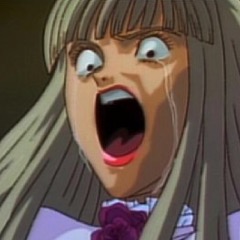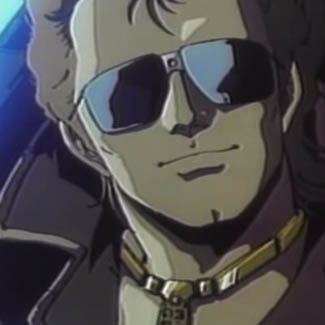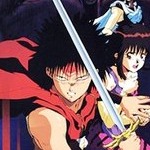
I don’t recall the circumstances that led to me struggling to explain Luna Varga to my 61-year-old mother. That’s not the sort of thing that anyone will warn you about in advance. No one is going to take you aside and inform you that part of being an adult will mean one day uttering aloud without a shred of irony the phrase: “It’s a cartoon about a girl with Godzilla for a butt.”
Perhaps this seems dangerously reductionist. Perhaps there’s much more to the story of the creation of Majuu Senshi Luna Varuga than a team of animators at AIC and Studio Hakk gathering together in some smoke-choked boardroom and hashing out storylines, concepts, and character designs. Perhaps there’s some fascinating history of how this four-part OVA was produced in 1991, and how it was licensed by ADV Films and released on VHS decades ago, only to ultimately fade into obscurity. Perhaps there’s some clever anecdote there. If there is, I am ignorant of it, and Luna Varga as it was known for its U.S. home video release is still just a cartoon about a girl with Godzilla for a butt.
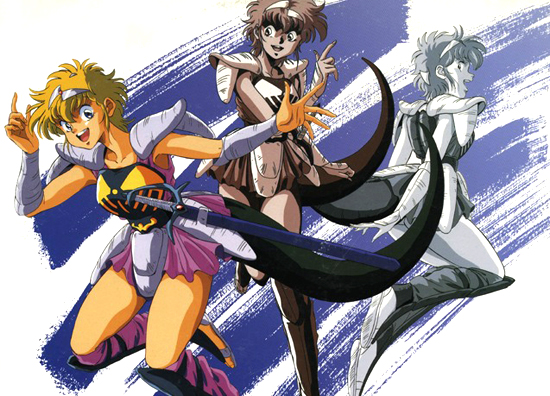
Prior to the DVD boom and the triumph of high-speed Internet, anime fandom eked out an existence in a drastically different cultural landscape. Outside of the realms of a few vaunted tape-trading circles, the anime available in the United States in the early to mid-Nineties came in two flavors: science fiction and fantasy. Copious fan-service was also a common seasoning, meaning anime had a somewhat seedy reputation as “those strange Japanese cartoons with all the nudity and exploding heads.” It was during this era that ADV Films published releases like Devil Hunter Yohko and Girl from Phantasia, short works that could be purchased on a few over-priced VHS tapes or rented from Blockbuster as long as the incriminating “Ages 17+” stickers didn’t scare your 14-year-old self away from the checkout counter. These weren’t your daddy’s cartoons. It was all edge and very little significance, a culture of style over substance. And it brought us releases like Luna Varga, a cartoon about a girl with Godzilla for a butt.
The storyline of Luna Varga is straightforward: when the demon-possessed Emperor of Dambas wages war on the neighboring nation of Rimzbel, Luna—the second princess in line to the throne of Rimzbel—makes a pact with a mysterious force to acquire the power to defend her kingdom and protect her family. As a result, Luna fuses with Varga, a legendary demon-dragon that looks suspiciously like Jack Kirby’s Devil Dinosaur with a green paint job. Luna becomes Varga’s “brain,” and the two work in tandem to slay demons and to scatter foreign armies under Varga’s massive, stomping claws.
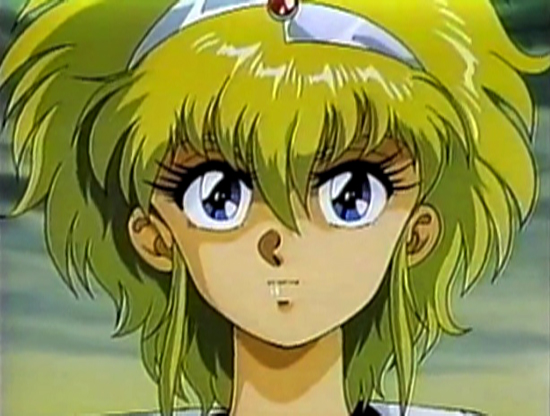
Luna’s demonic transformation causes some embarrassment to our heroine, because it involves her posterior being welded to the forehead of a gargantuan Tyrannosaurus during battle. During moments of repose, Varga shrinks down so that Luna still has a goofy dinosaur tail poking out of her skirt. There’s a plotline involving the demons of Dambas kidnapping Luna’s younger sister. There are vague murmurings about the resurrection of evil extra-dimensional overlords and other typical Western-influenced high fantasy stuff. There’s a buffoonish warrior (voiced by Banjou Ginga) that runs around at high speed trailing dust clouds and smashing face-first through buildings. There’s a lecherous sorcerer named Gilbert whose defining traits are an obnoxious laugh and a penchant for summoning fire-breathing wyverns. There’s a shield-maiden named Rapier who inexplicably fights with a whip. There’s milquetoast love interest for Luna and there’s a boy who transforms into a winged pussycat and there’s an over-sexed bunny girl and…
You know what? It doesn’t matter. Luna Varga is still a cartoon about a girl with Godzilla for a butt.
There’s a reason this anime has been largely forgotten. There’s not much in terms of content or quality to distinguish Luna Varga from dozens of other short, comedic works of Japanese fantasy animation. It’s not as weird as Leda: The Fantastic Adventure of Yohko. It’s not as zany or as energetic as Dragon Half. Despite an oddly somber and ambiguous ending—I can’t honestly call it a conclusion—Luna Varga doesn’t transition between comedy and drama as successfully as Slayers, and I’m sure many will argue that Slayers doesn’t accomplish that particular feat very well, either. Compared to its contemporaries (Outlanders) or to modern anime with similar stylistic underpinnings (Queen’s Blade), even the fan service of Luna Varga seems quaint.
So what does Luna Varga having going for it? It’s got a rocking opening theme, bellowed by Masato Shimon, with lyrics that would make more sense in the context of the hot-blooded transforming robot cartoons that Luna Varga emulates. It’s got character designs by Yuji Moriyama. It’s got a few decent moments of kaiju-sized critters stomping on castles. And it’s got a girl with Godzilla for a butt.
I can’t imagine Sentai Filmworks, Section23, Maiden Japan, or any of the other labels that spun off from the flaming wreckage of ADV Films dusting Luna Varga off for a deluxe, 25th anniversary Blu-ray re-release, and I haven’t seen a VHS copy of this show since a time when pterosaurs stalked the skies, so viewing Luna Varga these days would likely involve a certain activity that rhymes with “Florence”. Sometimes, though, it’s best to let sleeping dinosaurs lie. I should have left this one in the Vault.
Distributor: ADV Films
Originally released: 1991
Running Time: 120 minutes


